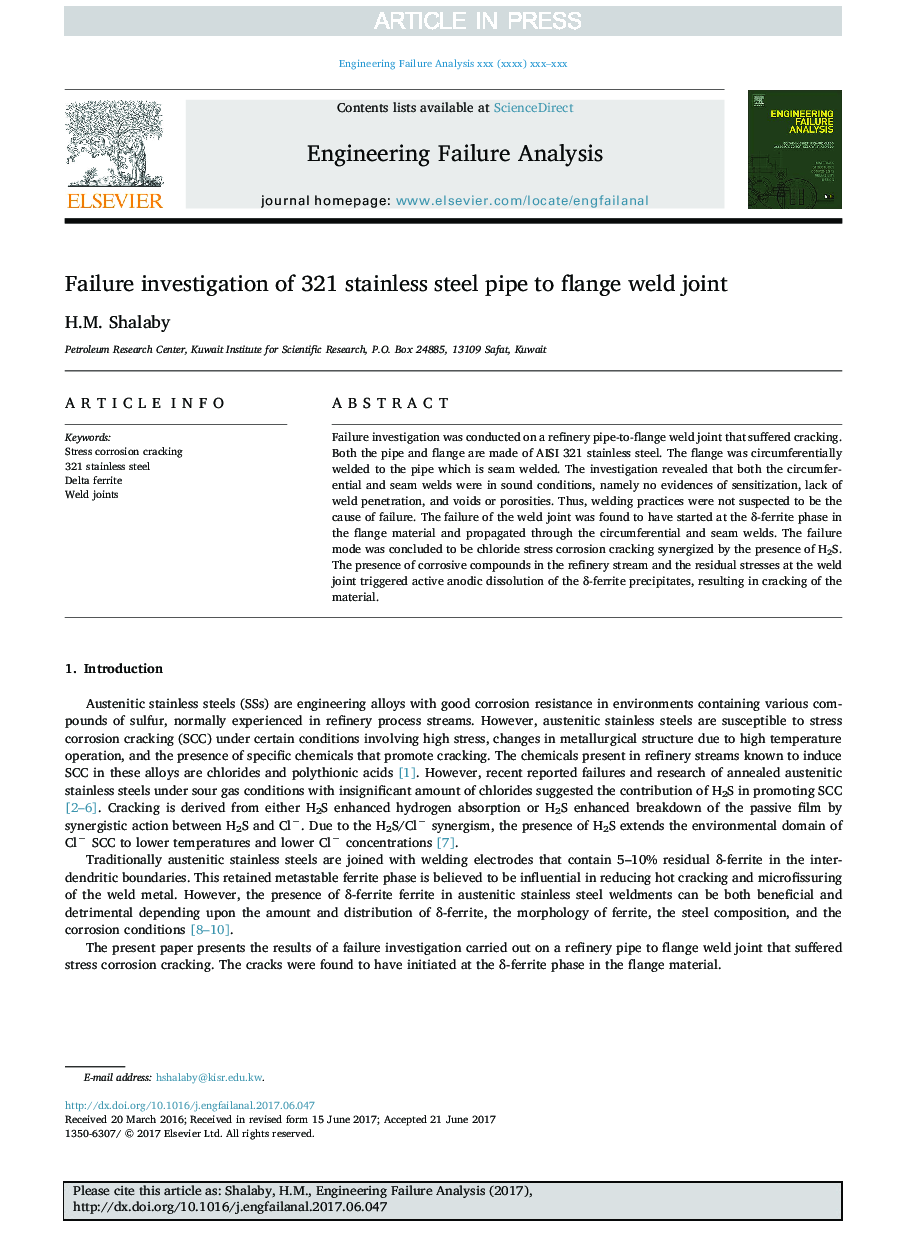| Article ID | Journal | Published Year | Pages | File Type |
|---|---|---|---|---|
| 5013512 | Engineering Failure Analysis | 2017 | 9 Pages |
Abstract
Failure investigation was conducted on a refinery pipe-to-flange weld joint that suffered cracking. Both the pipe and flange are made of AISI 321 stainless steel. The flange was circumferentially welded to the pipe which is seam welded. The investigation revealed that both the circumferential and seam welds were in sound conditions, namely no evidences of sensitization, lack of weld penetration, and voids or porosities. Thus, welding practices were not suspected to be the cause of failure. The failure of the weld joint was found to have started at the δ-ferrite phase in the flange material and propagated through the circumferential and seam welds. The failure mode was concluded to be chloride stress corrosion cracking synergized by the presence of H2S. The presence of corrosive compounds in the refinery stream and the residual stresses at the weld joint triggered active anodic dissolution of the δ-ferrite precipitates, resulting in cracking of the material.
Related Topics
Physical Sciences and Engineering
Engineering
Industrial and Manufacturing Engineering
Authors
H.M. Shalaby,
